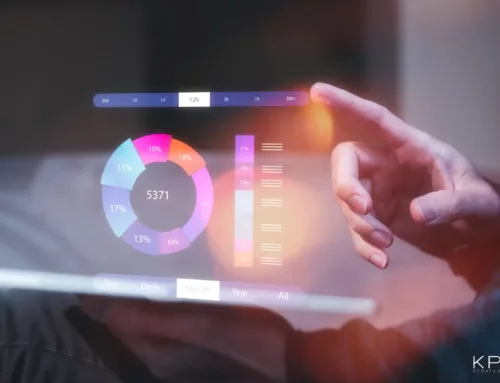“The value of an idea lies in the using of it.“ – Thomas Edison
This article shares valuable insights, tools and resources for managing lean ideas. Make sure an idea never gets lost within your organization and get your team to board the train of innovation by following these guidelines.
How to generate ideas for Lean/6Sigma Projects?
Generating ideas for Lean and Six Sigma projects is essential for maintaining organizational health and catapult future successes. Here are some proven methods and techniques to help you generate ideas for Lean and Six Sigma projects:
Value Stream Mapping (VSM):
- Conduct a value stream mapping exercise to visually represent the current state of a process. This can help identify bottlenecks, inefficiencies, and areas/ideas for improvement.
Gather Feedback:
- Gather feedback from customers, both internal and external, to identify pain points and areas where improvements are needed. Customer complaints and suggestions can be valuable sources of project ideas.
Benchmarking & Best Practice Comparison:
- Compare your processes and performance metrics to industry benchmarks and Continuous Improvement best practices. Identify gaps and areas where your organization can improve.
Process Observation:
- Spend time observing and documenting how processes are executed in the workplace. This can reveal inefficiencies, deviations from standard procedures, and opportunities for improvement.
Root Cause Analysis:
- When problems or defects occur, conduct root cause analysis using techniques like the 5 Whys to identify the underlying causes. This can lead to new and refreshing project ideas aimed at addressing the root causes.
Process Metrics and Data Analysis:
- Analyze process metrics and historical data to identify patterns, trends, and areas where performance is below expectations. Projects can be initiated to address these issues.
Brainstorming Sessions:
- Organize brainstorming sessions with cross-functional teams to generate project ideas. Encourage participants to think creatively and consider all aspects of the process.
Process Walks or Gemba Walks:
- Do the “Gemba Walk” at the actual workplace to observe processes firsthand. Engage with employees and ask for their input on process improvement ideas.
Voice of the Employee (VoE):
- Collect feedback from employees who work directly with the processes. They often have valuable insights into inefficiencies and potential improvements.
Pareto Analysis:
- Use the Pareto principle (80/20 rule) to identify the vital few factors that are responsible for the majority of problems or defects. Focus improvement efforts on these critical areas.
Failure Mode and Effects Analysis (FMEA):
- Conduct FMEA to identify potential failure modes in a process and assess their impact, likelihood, and detectability. This can lead to risk-based project ideas.
Kaizen Events:
- Organize Kaizen events, which are short, focused workshops aimed at making rapid process improvements. These events often generate project ideas for longer-term improvements.
Process Simulation:
- Use simulation software to model different scenarios and variations of a process. This can help identify areas where changes would have the most significant impact.
Technology Assessment:
- Explore how emerging technologies such as automation, artificial intelligence, or IoT can be applied to improve processes and reduce waste. In this regard, be sure to assess your technology and processes against the 8 wastes of Lean and how to eliminate them.
Regulatory Compliance:
- Stay informed about industry regulations and compliance requirements. Projects related to ensuring compliance and reducing the risk of non-compliance can be essential.
Supply Chain Analysis:
- Analyze the supply chain for opportunities to optimize inventory levels, reduce lead times, and improve supplier relationships.
Cost-Savings Analysis:
- Review cost structures and identify areas where cost reduction or cost optimization is possible. Use our Cost Savings template to simplify this step and get an all-rounded analysis.
Cross-Functional Collaboration:
- Collaborate with different departments and teams to identify interdepartmental or cross-functional process improvement opportunities.
If you’re hoping for a way to combine all or some of the above techniques, we have good news for you. Remember that Lean and Six Sigma projects should be data-driven and focused on reducing waste, improving quality, and increasing efficiency.
Be sure to prioritize projects that align with your organization’s strategic goals and have a clear potential for measurable improvement. Please refer to our resource section at the bottom of this page to make use of various tools for generating – as well as processing and keeping track of ideas and relative projects. Below, we shed some light on the meaning of some of these helpers.
Continuously Improve With Our Latest News & Updates
What is an Idea Funnel?
An “idea funnel” or “project hopper” are terms often used interchangeabley in the context of innovation, creativity, and project management to describe a systematic approach to generating, evaluating, and prioritizing ideas or projects. These concepts help organizations or individuals manage their creative processes and ensure that valuable ideas are developed into successful projects.
What is a Project Hopper?
A Project Hopper in the context of Lean Six Sigma is a system for collecting, prioritizing, and selecting Lean Six Sigma projects. It is a way to ensure that the most important and valuable projects are selected and executed.
The Project Hopper typically consists of a process for collecting ideas and suggestions for projects, as well as a criteria for evaluating and prioritizing those ideas. The criteria may include factors such as the potential impact of the project, the feasibility of the project, and the cost of the project.
The Project Hopper process or Idea Funnel is a valuable tool for organizations that are trying to implement Lean Six Sigma. It helps to ensure that the right projects are selected and executed, and that the organization is getting the most value out of its Lean Six Sigma investment
What is a Project Backlog?
A project backlog is a prioritized list of work items that need to be completed in order to deliver a project. It typically includes tasks, features, bugs, and other items that need to be addressed. The backlog is used by the project team to track their progress and to ensure that they are working on the most important items first.
Project backlogs are often used in agile project management, but they can also be used in other project management methodologies. In agile, the backlog is typically updated on a regular basis, such as at the beginning of each sprint. This allows the team to adjust their priorities as needed and to ensure that they are still working on the most important items.
Project backlogs are typically organized by priority, with the most important items at the top of the list. However, other factors, such as dependencies and risk, may also be considered when prioritizing the backlog.
What are the Benefits of using a project backlog?
- It helps to ensure that the project team is focused on the most important work items.
- It helps to track the progress of the project and to identify any potential problems early on.
- It provides a communication tool for the project team and stakeholders.
- It helps to ensure that the project is delivered on time and within budget.
How to Know if You need a Project Hopper?
Here are a few signs that indicate your need for a prject hopper/idea funnel.
- You have a lot of ideas for projects, but you’re not sure which ones are the most important or feasible.
- You’re struggling to prioritize your projects and to focus on the most important ones.
- You’re having trouble keeping track of all of your projects and their progress.
- You’re not getting enough input from stakeholders on your projects.
- Your projects are often running late or over budget.
Examples for How to generate an AI Strategy or Projects?
Developing an AI strategy or initiating AI projects involves careful planning, alignment with business goals, and a clear understanding of the organization’s capabilities and needs. Here are some examples of how to generate an AI strategy or projects:
Identify Business Goals and Needs:
-
- Start by understanding the specific business goals and challenges that AI can address. For example, improving customer service, reducing operational costs, or enhancing product recommendations.
- Conduct a thorough assessment of your organization’s current capabilities, including data availability, technology infrastructure, and AI expertise.
Executive Alignment: Ensure that top leadership is aligned with the AI initiative. Seek executive buy-in and support for AI projects.
Define AI Objectives: Clearly define what you want to achieve with AI. For instance, you might aim to increase revenue by a certain percentage, reduce customer churn, or automate specific tasks.
Data Assessment: Assess the quality, quantity, and relevance of your data. Identify data sources and gaps that need to be addressed for AI projects.
AI Use Case Exploration: Brainstorm potential AI use cases that align with your business objectives. For example:
Predictive Maintenance: Use AI to predict when equipment or machinery is likely to fail, reducing downtime.
Recommendation Engine: Implement a recommendation system to personalize content or product suggestions for customers.
Anomaly Detection: Employ AI to identify unusual patterns in financial transactions for fraud detection.
Prioritization: Rank the identified use cases based on factors like potential impact, feasibility, and alignment with business goals.
Resource Allocation: Allocate resources, including budget, talent, and technology, to prioritize AI projects.
Project Roadmap: Develop a roadmap that outlines the timeline, milestones, and dependencies for each AI project. Ensure that the roadmap aligns with the overall AI strategy.
Continuous Improvement: Implement a feedback loop for continuous improvement. Regularly assess the performance of AI systems and update models as needed.
Monitoring and Compliance: Establish monitoring mechanisms to track AI model performance, fairness, and bias. Ensure ongoing compliance with regulatory requirements.
Communication and Reporting: Regularly communicate the progress and impact of AI projects to stakeholders and leadership.
Measure and Adjust: Continuously measure the ROI and impact of AI projects against predefined KPIs. Adjust your strategy and projects as needed to achieve the desired outcomes.
Remember that AI strategy and projects should be flexible and adaptable to changing business conditions and technological advancements. Regularly review and update your strategy to stay competitive and achieve long-term success with AI.
Best tools for organizing a Project Hopper/ Idea Funnel / Project Backlog?
- Effectively and accurately organize the impacts of your improvement projects with our Project Evaluation (Project Benefits) Template. Get more support for Lean/ 6 Sigma initiatives using this template to organize project hoppers, project backlogs and/or results.
- Learn how to capture and share ideas with your team with the KPI Fire mobile app.
- KPI Fire’s Idea Funnel helps you organize and select the best ideas to turn into projects. Be sure to share this resource with anyone you want to inspire to continually improve.
How to evaluate Projects? (Effort vs Impact)
Using the Project Evaluation Template, you can evaluate projects based on effort and impact by implementing the following steps:
- Identify the criteria for evaluation. What are the most important factors to consider when evaluating a project? This may include factors such as the potential impact of the project, the feasibility of the project, the cost of the project, and the effort required to complete the project.
- Assign weights to the criteria. How important is each criterion relative to the others? For example, you may give more weight to the potential impact of the project than to the cost of the project.
- Rate each project on each criterion. Use a scale of 1 to 5.
- Calculate the overall score for each project. Multiply the rating for each criterion by the weight for that criterion, and then add the products together.
- Prioritize the projects based on their overall score. The projects with the highest scores should be prioritized first.
By systematically evaluating projects based on effort versus impact and using a well-defined scoring and weighting system, organizations can make more informed decisions about where to allocate their resources and focus their efforts for maximum benefit.
What is a good project for my Green Belt Certification?
Green Belt projects in Six Sigma are typically aimed at improving processes, reducing waste, and enhancing efficiency within an organization. Here are some project ideas that can be suitable for a Green Belt Certification:
Reducing Manufacturing Defects: Identify and reduce defects in a manufacturing process to improve product quality and reduce rework.
Streamlining Order Processing: Optimize the order-to-delivery process to reduce lead times and improve customer satisfaction.
Inventory Management: Implement inventory control measures to reduce excess inventory and carrying costs while ensuring product availability.
Healthcare Process Improvement: Identify and eliminate bottlenecks in healthcare processes, such as patient admissions, to improve patient care and reduce wait times.
Supply Chain Optimization: Optimize the supply chain process to reduce transportation costs, improve delivery times, and enhance overall efficiency.
Software Development Process: Streamline the software development lifecycle to reduce defects, improve release times, and enhance software quality.
Your Green Belt training will provide you with the necessary skills and knowledge to effectively manage and complete your chosen project. Remember to use our trusted resources on this page to capture, manage and share ideas within your team to boost overall operational successes.




